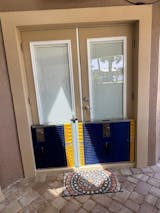Flash floods are sudden, unexpected, and extremely dangerous. These rapid-onset events can transform a calm environment into a life-threatening situation within minutes. Despite their severity, many people don't take these floods seriously, often due to widespread misconceptions. This lack of understanding can lead to significant losses and even endanger lives. Let's debunk some of the most common and dangerous myths about flash floods and arm you with the truth, practical advice, and essential resources.
Why Are Flash Floods So Dangerous?
Flash floods are particularly perilous due to their sudden nature. Unlike regular floods that develop over time, these floods can occur with little to no warning, often triggered by intense rainfall, dam breaks, or rapid snowmelt. The swift onset of these floods leaves little time for preparation or evacuation, catching people off guard. The sheer force of moving water in a flash flood can sweep away cars, uproot trees, and destroy buildings, making them incredibly destructive.
According to the National Weather Service (NWS), more than half of all flood-related fatalities occur in vehicles, highlighting the danger of underestimating the power of moving water. Just six inches of fast-moving water can knock over an adult, and twelve inches can carry away a small car. The speed and volume of water involved in these floods amplify their threat, making them one of the deadliest natural disasters.
Why Don't People Take Flash Floods Seriously?
Several factors contribute to the lack of seriousness with which people regard these floods:
- Misconceptions and Myths: Many people believe that flash floods only happen in certain areas or that they have enough time to react. These myths can lead to a false sense of security.
- Lack of Awareness: In regions that don't frequently experience these floods, residents may not be aware of the signs and dangers, leading to complacency.
- Underestimation of Risk: The power of moving water is often underestimated. People may not realize how quickly conditions can become dangerous or how little water it takes to cause significant damage.
- Previous Experiences: Individuals who have lived through minor flooding without severe consequences might not realize how different and dangerous a flash flood can be.
Why Is This Dangerous?
Underestimating the danger of flash floods can have dire consequences:
- Delayed Reactions: People who don’t take flash flood warnings seriously may delay evacuation or fail to take necessary precautions, putting themselves and their families at risk.
- Inadequate Preparation: Without proper preparation, homes and properties are more vulnerable to severe damage. Simple measures, like installing flood barriers, can make a significant difference but are often overlooked.
- Increased Fatalities: The majority of flash flood-related deaths occur when people try to cross flooded areas on foot or in vehicles. Not recognizing the risk can lead to fatal decisions.
- Economic Losses: The financial impact of flash floods can be enormous. FEMA reports that just an inch of water in a home can cause over $25,000 in damage. Without adequate insurance and preparation, homeowners can face devastating financial losses.
Myth 1: "It Won't Happen Here"
Fact: Flash floods can occur anywhere, not just in high-risk areas. While certain regions are more prone to floods due to geography and climate, they can happen virtually anywhere when conditions are right. For instance, the Federal Emergency Management Agency (FEMA) reports that flash floods occur in all 50 states.
A striking example is the 2013 flash flood in Boulder, Colorado. Over 9 inches of rain fell in just a few hours, resulting in catastrophic flooding that affected over 19,000 homes and caused approximately $2 billion in damages. No area is immune to floods, so it’s crucial to be prepared no matter where you live.
Myth 2: "A Little Water Won't Hurt"
Fact: Just six inches of fast-moving water can knock over an adult, and 12 inches can carry away a small car. The power of moving water is often underestimated. According to the National Weather Service (NWS), more than half of all flood-related drownings occur when a vehicle is driven into hazardous floodwaters.
In 2020 alone, the U.S. experienced 57 flood-related deaths, with the majority occurring in vehicles. It’s vital to remember the slogan: "Turn Around, Don’t Drown." Never attempt to walk, swim, or drive through floodwaters.
Myth 3: "I Have Flood Insurance, So I’m Covered"
Fact: Standard homeowners' insurance does not cover flood damage. Flood insurance must be purchased separately, often through the National Flood Insurance Program (NFIP). According to FEMA, just an inch of water in a home can cause over $25,000 in damage.
Ensure you review your insurance policies and consider purchasing flood insurance, especially if you live in an area prone to flash floods. It’s also wise to document your belongings and store important documents in a safe, waterproof location.
Myth 4: "Flash Floods Give Plenty of Warning"
Fact: Flash floods can develop within minutes and without visible signs of rain. They are often triggered by intense rainfall, dam breaks, or rapid snowmelt. The sudden nature of floods means you might have very little time to react.
The NWS provides flash flood warnings, which are issued when a flash flood is imminent or occurring. These alerts are sent to your phone, and you can also receive updates through weather radios and apps. Always heed these warnings and have an emergency plan in place.
Myth 5: "I’ll Just Wait It Out"
Fact: Delaying evacuation can be deadly. Flash floods move rapidly and can increase in severity in a short period of time. When authorities issue an evacuation order, it’s because the risk to your safety is imminent.
A prime example is the 2015 flood in Hildale, Utah, where heavy rains caused a wall of water to sweep through the town, claiming 13 lives. Many residents didn’t evacuate in time, underscoring the importance of immediate action when warnings are issued.
Protecting Your Home with Removable Flood Barriers
One effective way to protect your home from flash floods is by using removable flood barriers. These barriers are designed to be quickly installed when a flood threat is imminent and just as easily removed when the danger has passed. They can be set up in minutes, providing a robust defense against floodwaters.
Removable flood barriers can protect doorways, windows, and garage openings, preventing water from entering and causing damage.
$1,260.00
DAM EASY® FLOOD GATE - DOOR DAM Floods are becoming more common around the world. What was once a 100-year phenomenon is now a seasonal trend that homeowners must deal with. That’s EXACTLY why you need this Dam Easy Flood… Read MoreFlood Barrier Door Dam - Ultimate Flood Gate

Products like these are invaluable in flood-prone areas and can be a crucial part of your home’s flood preparedness plan.
Emergency Resources and Contacts
It's essential to have quick access to emergency contacts and resources. Here are some key numbers and websites:
- Emergency Services: 911
- FEMA (Federal Emergency Management Agency): 1-800-621-FEMA (3362), www.fema.gov
- National Weather Service (NWS): www.weather.gov
- National Flood Insurance Program (NFIP): 1-877-336-2627, www.floodsmart.gov
- American Red Cross: 1-800-RED-CROSS (733-2767), www.redcross.org
Conclusion
Understanding the realities of flash floods and debunking these common myths is crucial for staying safe and minimizing damage. Always be prepared, stay informed, and take proactive steps to protect your home and loved ones. Remember, when it comes to flash floods, every minute counts, and the right actions can save lives.
For added peace of mind and expert advice, contact Dam Easy for a free consultation about flood safety for your home. If you're a Florida resident, you can invite our team to conduct a thorough on-site flood risk evaluation. Our experts will provide personalized advice based on your property and local flood history. We ship worldwide and are always ready to assist our customers online. Contact us today to learn more about how we can help you protect your home from the dangers of flash floods.




















